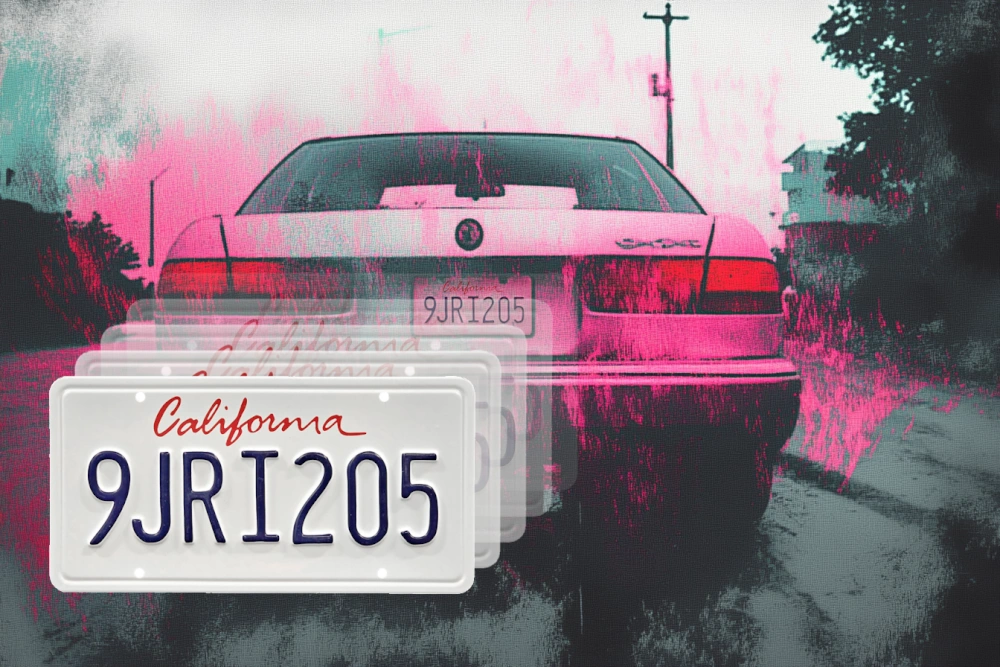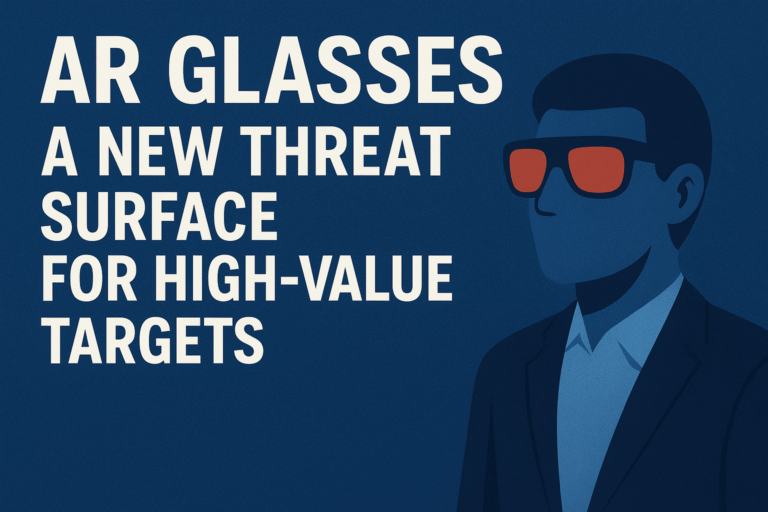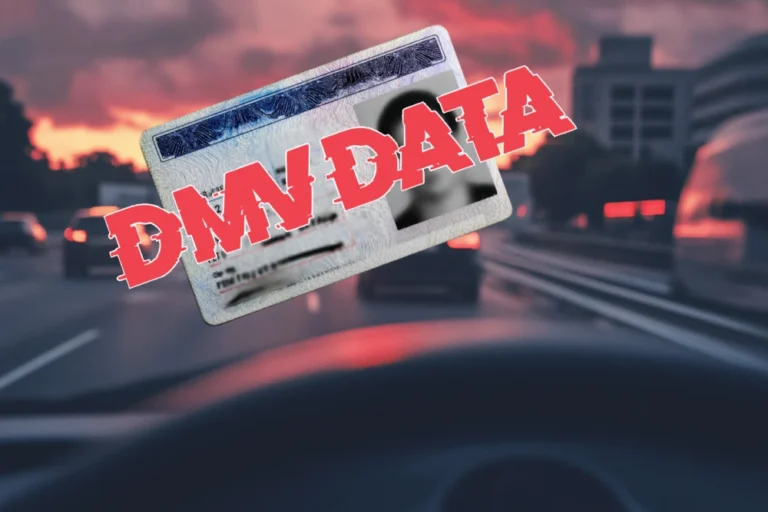How ALPR Systems Quietly Track You Everywhere
Your License plate is talking more than a drunk uncle at Thanksgiving.
Automatic License Plate Recognition (ALPR) technology is now embedded across public streets, private neighborhoods, and commercial parking lots. These systems capture, tag, and upload your movements in real time. Some of this data supports law enforcement. Some of it fuels private surveillance networks. Most of it trails behind you like digital exhaust – logged, stored, and often searchable by people you’ve never met.
Here’s what a single day might look like for your plate.
7:38 AM :: Leaving Your 🏡 Gated Community
| ⚫ Fixed ALPR Camera As you roll out of your neighborhood, a gate-mounted ALPR camera captures your plate. These systems are commonly deployed in high-income communities for traffic control or safety—but that data may be uploaded to third-party systems, not just stored locally. Vendors: Flock Safety: Plate + timestamp + location. Often shared with HOAs and law enforcement. Retained up to 30–90 days Implication: Your routine departure is logged and searchable. Whether you’re a resident or a visitor. |
7:50 AM :: Passing a 👮 Police Cruiser
| ⚫ Mobile ALPR (Law Enforcement) On your way to work, you pass a parked police cruiser with ALPR cameras on the roof. These units scan passing plates continuously. Even when the vehicle isn’t in motion. Vendors: Motorola, ELSAG, Vigilant: Instant scan of your plate. Tagged with GPS and time. Uploaded to law enforcement databases Implication: You’re not under suspicion, but your presence is still recorded and stored. Often accessible later. (Many call this warrantless surveillance by the government.) |
8:10 AM :: Entering Your 🅿️ Workplace Lot
| ⚫ Private ALPR System You pull into your company’s parking lot. The gate uses an ALPR system to recognize employees and log entry. These systems are often managed by building ops, not the employer. And they may have their own data retention and access policies. Vendors: Axis Communications, Genetec: Plate tied to access logs. Records ingress/egress times. May be reviewed by HR or security Implication: Your arrival and departure are tracked daily. In some cases, that data may be shared with outside vendors or property managers. |
2:30 PM :: Taking the 🛣️ Toll Road to a Client Meeting
| ⚫ Toll Infrastructure ALPR After lunch, you head to a client site across town, merging onto a toll road. Overhead gantries scan your plate for billing. But that data doesn’t just stay with the tolling authority. Vendors: TransCore, Kapsch, Conduent: Captures plate, time, and location. Retained by toll agencies. Often accessible via subpoena or contractor platforms Implication: Toll data can quietly expose commute patterns, mid-day detours, and repeated visits to sensitive locations. |
2:55 PM :: Parking in a 🅿️ Downtown Garage
| ⚫ Commercial ALPR You pull into a commercial garage at your client’s building. A private ALPR system logs your plate for ticketless entry. But that system may also feed commercial surveillance networks. Vendors: DRN (Digital Recognition Network): Plate logged on entry and exit. Data sometimes resold to insurers, lenders, or repo agents. Aggregated across multiple garages and cities. Implication: Your client visit becomes part of a searchable dataset that someone else owns. And may profit from. |
6:40 PM :: Driving Through a 🏘️ Suburban Neighborhood
| ⚫ Community-Deployed ALPR You take the long way home, skipping the tolls. As you pass through a residential area to avoid traffic, a neighborhood-mounted ALPR camera picks up your plate. Vendors: Flock Safety: Captures non-resident traffic. Shared with neighborhood admins and sometimes police. Retained in searchable cloud systems Implication: Even casual detours can leave a record. For high-risk individuals, these passive scans can reveal patterns, habits, or affiliations. |
What’s Collected in Just One Workday?
| Data Point | Where It’s Captured |
| License Plate | Neighborhood gate, police cruiser, workplace lot, toll road, garage, suburb |
| Timestamp | Every scan point |
| GPS Coordinates | Cruiser, toll gantry, garage, neighborhood camera |
| Vehicle Image | Often captured with each plate scan |
| Movement Pattern | Clearly mapped via timing and location sequences |
And while ALPR systems are designed to capture plates, many also record full-frame images of the vehicle. In certain environments -like parking garages, gated entrances, or drive-thrus-these cameras may inadvertently capture clear views of the driver’s face or passengers. It’s not the goal, but it happens. And once recorded, that visual data can become part of the surveillance trail.
Why It Matters
ALPR surveillance isn’t just about police work. It’s about infrastructure. And who gets access to it.
Across a single day, your plate may be scanned six or more times. That data is fragmented across public systems, private networks, and commercial platforms. When it’s pulled together, it tells a very complete story.
For public figures, executives, activists, or anyone facing targeted harassment, that data and story can be weaponized:
- To locate you in real-time
- To build a profile of your schedule
- To identify who you visit and when
- To predict where you’ll be next
Best Practices for Avoiding ALPR Tracking
Awareness & Behavior
- Use alternate vehicles for sensitive travel
Especially when visiting locations tied to activism, healthcare, or personal affairs.
>> Using an Uber/Lyft that someone else orders is particularly effective. - Know which ALPR systems you pass through daily
Map the surveillance landscape around your home, office, and commute. - Avoid toll roads and commercial parking when possible
These are major data collection points, often with loose sharing policies. - Ask your workplace or building managers about ALPR policies
Many deploy plate readers without disclosure, and may not control the data they collect.
Identity Unlinking
- Reduce or wipe your digital footprint
When your plate is scanned, it’s not just vehicle data—trackers often tie it to broader identity profiles using commercial data. The less data available on you, the harder it is to link you across platforms.
Physical Countermeasures
- Consider license plate suppression technology
Technologies exist to reduce ALPR visibility. Maybe it will get better? Right now the effectiveness and legality varies … and mostly sucks:
| Method | How It Works | How Effective | Legal Status | Considerations |
| Plate Covers (light-bending) | Uses lenticular lens or polarized plastic to distort plate from certain angles (esp. above) | Low to Mod (against fixed readers) | Illegal in many states, especially if plate obscured | May invite law enforcement scrutiny even if legal |
| Plate Flipping Mechanisms | Mechanical or remote-controlled flip to hide the plate | High | Illegal in all states | Criminal penalties likely; not recommended |
| Photo-Blocking Sprays | Reflective coating to confuse IR cameras | Low | Legal to own, often illegal to use | Ineffective against most modern ALPR systems |
| Infrared-LED Plate Frames | Emits IR light to blind ALPR cameras | Low to Moderate (older systems) | Often illegal to use while driving | Noticeable in person or to human eyes at night |
| Removable Plate Covers | Used only when parked in public/private areas | High (when used properly) | Legal in some states when stationary | Useful for protecting plate when parked long-term |
Bottom Line: Most suppression tech is either illegal on the road, marginally effective, or both. However, removable covers and privacy screens while parked are lower-risk options. Their utility increases when paired with digital risk reduction and exposure monitoring.
Your plate was designed for law enforcement. Today, it’s a tracking device.
Want to know who’s logging your plate? How to shut that tracking down?
Request a private ALPR risk assessment




